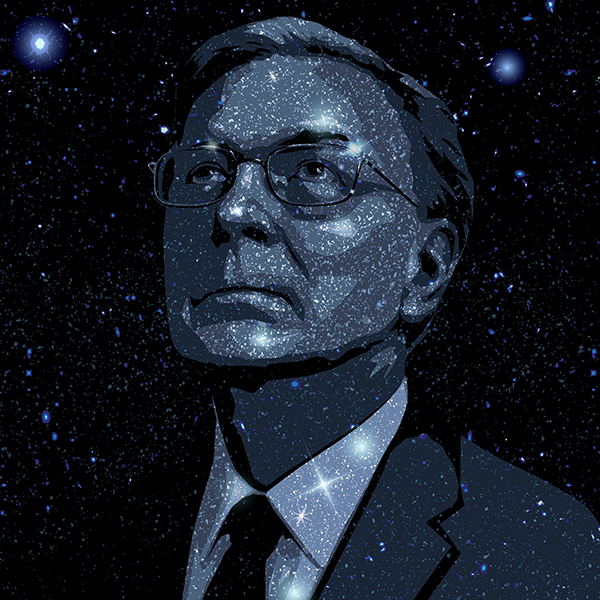The limits of human physical endurance can feel as unyielding as the fundamental laws of physics. No object can exceed the speed of light and no human being can run a marathon in under two hours. Some things are just physically impossible.
Then again, nobody believed someone could run a mile in under four minutes until Roger Bannister did it in 1954.
What actually limits our bodies? And how firm are those limitations?
In his new book, Endure: Mind, Body, and the Curiously Elastic Limits of Human Performance, Alex Hutchinson, BSc’97, an Academic All-Canadian back in his days as a member of McGill’s track team, argues that even today’s most extreme athletes have not yet hit the ultimate wall. Malcolm Gladwell is an enthusiastic supporter of Hutchinson’s approach to the subject and supplied the forward for the book.
Hutchinson, a journalist who regularly examines the science of exercise and fitness for both Outside magazine and The Globe and Mail, thinks records will continue to be broken. And the advances will come as much from mental training as physical.
“Limits that seem purely physical are mediated by the brain, which means they’re negotiable,” says Hutchinson, who majored in physics at McGill (he went on to do a PhD at the University of Cambridge). “It’s not an easy bargain. But those limits are not absolute.”
Hutchinson has a personal stake in those limits. He trained for years in an effort to run 1,500 metres in under four minutes. In high school and university, he repeatedly got within two seconds of his goal, but finally accepted that no amount of practice or training would ever get him below four.
In 1996, during his third year at McGill, Hutchinson ran a low-stakes 1,500-metre race in Sherbrooke. An official at the race made mistakes when calling out Hutchinson’s lap times. The errors threw off his carefully practiced pacing. He decided to forget strategy, and just go for it.
“I was [there] to run a race; why not just run as hard as I could?” he recalls.
He beat his previous best by nine seconds, blasting through the four-minute barrier. It was the fastest he’d ever run that distance. And the fastest he ever would.
His performance felt all the more mysterious because he could not duplicate it. His body was clearly capable of completing a four-minute run. So why couldn’t he do it every time?
For Endure, Hutchinson researched a wide range of punishing activities, including ultra-marathons, the Tour de France, transcontinental motorcycling, freediving, mountain climbing, and polar treks. As he chronicles each gruelling activity, he discovered that the science of endurance still holds more questions than answers.
Most experts agree that the brain plays a major role in endurance limits. They disagree, though, about how much of these limits are conscious or involuntary, and about how big a role they play.
Hutchinson is quick to squash the idea that you can achieve major performance improvements through simple mental tricks.
“Just knowing that your limits are in your head doesn’t mean they’re easy to change. They’re still there,” he says. “There’s no ‘biohack’ that allows you to do that.”
The book’s most convincing case that athletes can still push themselves further comes from graphing speeds over long-distance races. Marathoners, for example, typically start out running fairly quickly, and gradually slow down as the race progresses. If they were simply “running out of gas” and hitting a hard limit, they would steadily decelerate right to the finish line.
But something happens in the final leg—no matter how hard they’ve run, they tap into a mysterious energy reserve. They pick up the pace again. Their speed graph looks like a misshapen U, with high points at the beginning and end.
“When you have this u-shaped curve, it implies there’s a lot of fat on the bone,” says Hutchinson. “The mental side is still dictating the pacing.”
An athlete hitting the true limit would have nothing extra to give in that final leg. Consciously or unconsciously, the human brain can’t seem to help holding back something for that last push.
So far.
Hutchinson frames Endure with reportage on Nike’s current efforts to have a runner complete a marathon in less than two hours.
Hutchinson attended their most recent attempt. In that 2017 run, Kenyan Olympic marathoner Eliud Kipchoge, running on a heavily engineered Nike track and wearing experimental Nike shoes, came within 25 seconds of the two-hour barrier.
While his attempt isn’t logged as an official world record, it is still the fastest marathon ever run.
Hutchinson noticed that Kipchoge’s speed graph was not u-shaped. He didn’t make a final sprint. While many factors—such as not having other runners nipping at his heels—might account for his non-surge, it’s also possible that he overcame the brain’s impetus to hold something back for the end. If so, Hutchinson says, it means he came closer than ever to finding the true limit of human endurance.


